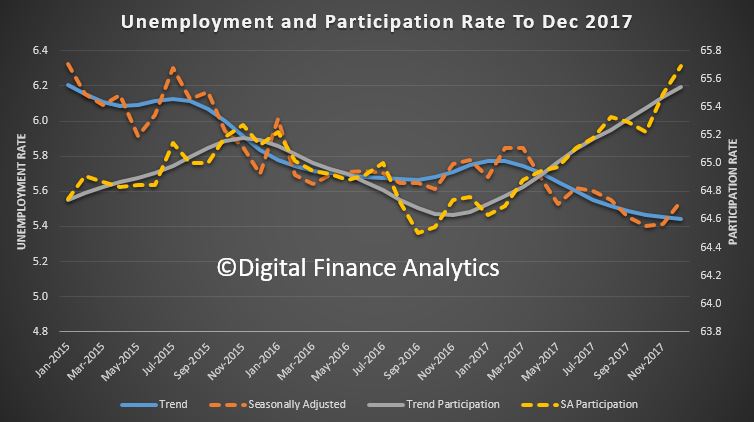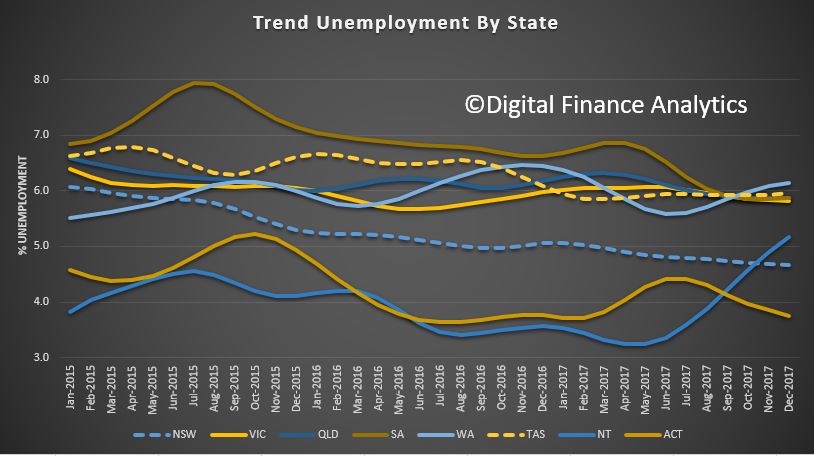The latest ABS data on employment to December 2017, shows the trend unemployment rate decreased slightly to 5.4 per cent in December 2017, after the November 2017 figure was revised up to 5.5 per cent. The trend unemployment rate was 0.3 percentage points lower than a year ago, and is at its lowest point since January 2013.
The seasonally adjusted number of persons employed increased by 35,000 in December 2017. The seasonally adjusted unemployment rate increased by 0.1 percentage points to 5.5 per cent and the labour force participation rate increased to 65.7 per cent. The number of hours worked fell.
 By state, trend employment rose in NT, WA and SA. Over the past year, all states and territories recorded a decrease in their trend unemployment rates, except the Northern Territory (which increased 1.6 percentage points). The states and territories with the strongest annual growth in trend employment were Queensland and the ACT (both 4.6 per cent), followed by New South Wales (3.5 per cent).
By state, trend employment rose in NT, WA and SA. Over the past year, all states and territories recorded a decrease in their trend unemployment rates, except the Northern Territory (which increased 1.6 percentage points). The states and territories with the strongest annual growth in trend employment were Queensland and the ACT (both 4.6 per cent), followed by New South Wales (3.5 per cent).
The ABS says monthly trend full-time employment increased for the 14th straight month in December 2017. Full-time employment grew by a further 17,000 persons in December, while part-time employment increased by 8,000 persons, underpinning a total increase in employment of 25,000 persons.
“Full-time employment has now increased by around 322,000 persons since December 2016, and makes up the majority of the 393,000 net increase in employment over the period,” the Chief Economist for the ABS, Bruce Hockman, said.
Over the past year, trend employment increased by 3.3 per cent, which is above the average year-on-year growth over the past 20 years (1.9 per cent). The last time it was 3.3 per cent or higher was in September 2005.
The trend monthly hours worked increased by 4.0 million hours (0.2 per cent), with the annual figure also reflecting strong growth over the year (3.6 per cent).The labour force participation rate remained at 65.5 per cent after the November 2017 number was revised up, the highest it has been since March 2011. The female labour force participation rate also increased to a further historical high of 60.4 per cent, having increased steadily over the past year.

